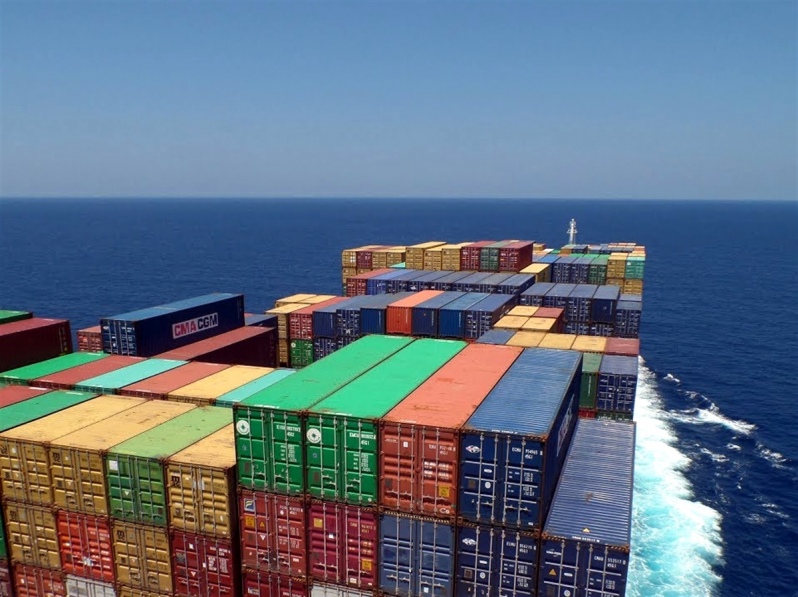
The tough route waiting for container shipping for the remainder of 2022
Inflation, falling demand, falling tariffs, trade union disputes and geopolitical conflicts shake the waves.
One aspect that is in the focus of container shipping is retail sales in the U.S. So far, these have been maintained and have been able to publish solid results on a continuous basis, well above anything observed before the pandemic. But how does that fit in with these high inflation rates that are so much talked about? questions a report by Xeneta.
It is a fact that consumers now leave stores with fewer products, even when they have spent as much as before. While it is said that «retail sales are measured in value», when talking about maritime transport, it must be clear that volume is a more important factor than value. However, if consumers leave the store with less, it also means that fewer containers are required to bring those products.
Emily Stausbøll, Xeneta’s market analyst says that «we are seeing the highest growth rates in food and gas spending, which traditionally are not imported goods in containers. In contrast, spending on imported goods in more traditional containers is experiencing much slower growth, much more in line with inflation».
Impact on tariffs
Consumption rationing can also be reflected in spot rates that have marked a steady decline But what about the long-term contract market? According to Xeneta, currently cargo beneficiaries face more considerations than a year ago, when it was a no-brainer to sign a one-year deal for large volumes on long-term contracts, versus higher spot markets, which by supply and demand action eventually ended up also boosting contract rates.
Currently, the cargo beneficiaries make a different balance sheet; therefore, they may consider decreasing their volumes in the market in the long term. They may even want to dive into the spot market with more volumes than normal, but that can also clash with the wishes of many shipping lines to move more containers to long-term contracts.
The world upside down
However, today the gap is narrowing between spot and long-term rates. Even now on the U.S. East Coast (USEC) long-term contract rates exceed those of the spot market. In addition, a new record spread was observed between fares on the Far East – USEC and Far East – USWC routes of just under $3,200.
Despite announcements, significant volumes of full containers still enter the U.S. at the USEC, the Gulf Coast and the USWC. When projecting the end of the third quarter of 2022, it has that usually the beginning of the season offers a large volume. However, this time it will be different, since, potentially, for the first time in history, it could be observed of a mobilization of lower volumes in the second half of the year compared to the first.
Although that would require some significant weakness in the market, global volumes are currently declining by 1.8%. If the volumes of the second half fall below those of the first, a total decrease of 2.7% would be observed worldwide.
However, it is still early to see that, but it is not improbable, as significant winds are observed against the global economy due to inflation and geopolitics. Therefore, it is important to closely monitor demand during this and the last quarter.
It will also be interesting to see what cargo beneficiaries will do as spot rates fall below long-term contract rates. Will they be able to make new agreements?
But still, there are other global developments to consider, such as disputes between unions and ports and terminals and the aforementioned geopolitics. In fact, congestion already frightens shipping lines, freight forwarders and shippers, in the main terminals of the United Kingdom and northern Europe. Added to that are the stoppage of port workers in Felixstowe, UK and the shortage of truck drivers in Bremerhaven, northern Germany. While the low water levels on the Rhine are slowly improving, there is a good proportion of congestion/delays due to the shortage of barges and a forced decrease in volumes on board, which in the long run puts pressure on land and rail transport capacity
Geopolitical disruptions, on the other hand, do not seem to cease. The war in Ukraine and tension in Taiwan, among other conflicts will surely have short- and long-term impacts on supply chains.
SOURCE: MUNDOMARITIMO.CL
